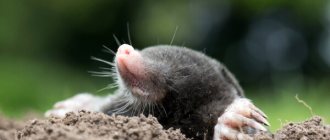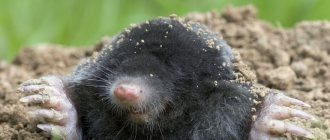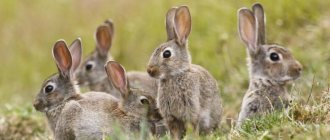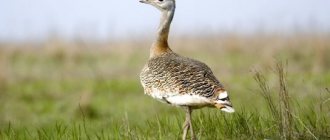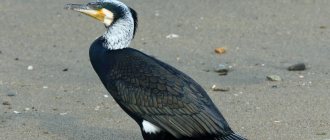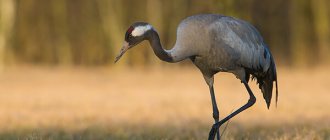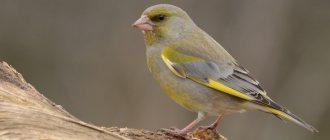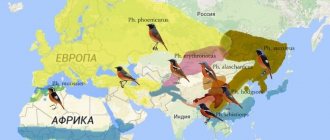- Wild animals
- >>
- Birds
black grouse bird from early childhood. This animal has more than once become the main character of fairy tales, narratives and children's stories. In many works, the authors show black grouse as smart, quick-witted, but is he really like that? The black grouse is undoubtedly one of the most interesting representatives of the bird class. It’s worth learning more about it.
Origin of the species and description
Photo: Teterev
The black grouse is one of the most beloved birds among the people. He is valued for his tender childhood memories of numerous fairy tales, for his bright and memorable appearance, and is especially valuable among hunters. The black grouse is called differently: “kosach”, “grouse”, “black grouse”, “field grouse”. In Latin, the name of the bird sounds like Lyrurus tetrix. Basically, the names come from two factors: characteristic appearance and behavioral characteristics.
Video: Grouse
Kosach belongs to the order Galliformes, the pheasant family. This is a widespread bird that prefers to live in forest and forest-steppe zones. It is quite easy to recognize such an animal. The black grouse has a large build, a short neck and a small head. Some adults can grow more than one meter in length. Plumage depends on gender. Males are shiny black with a tint and red eyebrows, females are reddish-brown with stripes of three colors: gray, dark yellow, brown (closer to black).
Interesting fact: In many languages, the name “grouse” is translated as “chicken”. And this is not at all surprising. The habits of this animal largely coincide with the habits of an ordinary domestic chicken.
There are different subspecies of black grouse.
To date, there is no exact data on their number, but most scientists identify seven:
- tetrix baikalensis;
- tetrix tetrix;
- tetrix tschusii;
- tetrix viridanus;
- tetrix mongolicus;
- tetrix britannicus;
- tetrix ussuriensis.
The subspecies have different habitats and some external differences. When determining a subspecies, external features are taken into account more. Thus, the main criteria are recognized: the degree of distribution of white feathers among the flight feathers and tail feathers, the size of the “mirror” on the wings of males, the nature of the pattern on the throat of the animal.
Stewed grouse
Hunters first hunt for game and then think about what to cook from it. The cook pulled out a grouse from the refrigerator to prepare a baked bird.
For this recipe you will need the following products:
- Thyme – 1 spoon.
- Parsley – 1 tbsp. spoon.
- Pepper, salt to taste.
- Salted lard – 100 grams.
- Butter – 30 grams.
- Onion – 1 head.
- Juniper berries – 1 teaspoon.
- Bay leaf.
- Lemon – 1 pc.
- Broth – 1 glass.
- Threads.
Preparation procedure:
- Mix parsley, thyme, pepper and salt.
- Coat the bird carcass on all sides.
- Cut the lard into thin plastic pieces, cover the breast with it and tie it with thread.
- Melt the butter in a saucepan and fry the carcass with onions for 5 minutes.
- Add a glass of broth, bay leaf, lemon and juniper.
- Cover the saucepan with a lid and place in the oven for one hour. If the carcass is large, then you can set it for an hour and a half.
- Turn the carcass periodically.
- After an hour, remove the carcass.
- Prepare the sauce: add a glass of broth and a little flour to thicken it.
For a side dish, you can boil the potatoes and then fry them. You can also add pickles to the table.
Appearance and features
Photo: Black grouse bird
The black grouse can be called a fairly large representative of its family. The average length of a male is fifty-eight centimeters, a female is forty-five centimeters. However, this is far from a chapel. In nature, there were much larger individuals - more than one meter in length. The weight is also not small - about 1.4 kg. It is easy to recognize a female and a male. Firstly, the male is always larger in size and weight, and secondly, the animals differ in the color of their feathers.
Interesting fact: Black grouse are in many ways similar to other representatives of Galliformes. However, there are striking differences. Thus, in these birds the metatarsus and nostrils are fully feathered, and in most subspecies the bases of the fingers are feathered.
The males of this species of birds have a brighter and more memorable appearance. They are easily recognized by their black plumage with a green or purple tint. Also distinctive features of black grouse are bright red eyebrows, white undertail and brown belly. A characteristic feature of males is the presence of a “mirror” on their flight feathers. It is a white spot and occupies most of the wing.
Females are not distinguished by their expressive appearance. The color of their feathers is reddish-brown. The entire body has pronounced transverse stripes of brown, black or gray. Many people confuse female black grouse with female capercaillie. However, the female black grouse has “mirrors” on the wings and a white undertail.
Male and female black grouse have different vocal sounds. The female's voice is similar to the voice of the most ordinary chicken. She makes sounds very similar to “ko-ko-ko”. Males mutter for a longer period of time and are distinguished by a loud, ringing voice. In case of danger, males shout “chu-ishsh”. However, it is not often possible to hear grouse. They are most “talkative” only during the mating period.
Spreading
Area
Distributed in the forest, forest-steppe and part of the steppe zones of Europe and Asia - from the Alps and the British Isles in the west to the Ussuri region and the Korean Peninsula in the east. The boundaries of the range are very vague - depending on the population size and cultural changes in the landscape, it is subject to fluctuations in one direction or another.
It is known that in Western and Central Europe, black grouse inhabit mainly forests in mountainous areas - for example, in the Slovenian Alps they are found only at an altitude of 1400-1800 m above sea level, although previously their range was much wider. In some regions of Central Europe, such as in the Eastern Sudetes, black grouse have almost completely disappeared due to human economic activity and changes in climatic conditions (more frequent formation of a thin layer of ice on the snow - crust). In addition to mountain forests, in Western Europe grouse also live on heathland along the northern coast - in Belgium, the Netherlands, Denmark and northern Germany. They are also found in Great Britain up to Scotland and Scandinavia.
Birch groves are one of the favorite habitats of black grouse
On the territory of Russia, the northern border of the range passes through the Kola Peninsula (from the Kola Bay to the village of Tetrino on the White Sea), the Arkhangelsk region (the lower reaches of the Nes, Mezen rivers, the Sula River valley), the Komi Republic (south of the mouth of the Yorsa River, the lower reaches of the Usa River, the valley the Bolshoi Kochmes river, the lower reaches of the Sobi), Tyumen region (the Poluy and Pelvozh rivers). To the east of the Ob, the exact border is not defined - it is known that on the Lena birds rise up to 64° N. sh., are found on the northern border of Lake Baikal, in the valley of the Argun and Gorin rivers and further south to the Ussuri River and Lake Khanka. Birds are not found on the Pacific coast. The southern border runs through the north of the Kursk, Voronezh and Volgograd regions, the southern edge of the Zhigulevskaya Upland, the valleys of the Samara and Ural rivers, where it goes into Eastern Kazakhstan. Further, the Russian border of the range returns to the upper reaches of the Ob, runs along the foothills of the Altai and goes to China.
In Asia outside the Russian Federation, grouse live in isolated areas of Kazakhstan and Central Asia, Mongolia, China and North Korea.
Habitats
It settles where forests or bushes are combined with open spaces - in small groves, copses, woodlands with an abundance of berry fields, in the valleys of large rivers, along the edges of raised and transitional swamps, floodplain meadows or agricultural lands. Avoids dense dark forests, but is found in extensive clearings or burnt areas. Almost throughout the entire range it prefers areas with a predominance of birch. Among the exceptions are the swamps and heathlands of Western Europe, as well as bush thickets in Ukraine and western Kazakhstan. In the mountains it most often lives on the upper or lower border of the forest.
Black grouse leads a sedentary or nomadic lifestyle. Seasonal movements are irregular, but in some years they can cover a significant part of the population. Mobility can be associated both with a lack of food in winter, and with a significant fluctuation in numbers characteristic of this species - every 4-10 years, the population of these birds can increase sharply.
Where does the black grouse live?
Photo: Male grouse
Black grouse are very common birds. The largest number of such birds can be found in Europe and Asia. In these areas the population is always unstable. This is due to changes in the landscape and the availability of suitable food. If in the north and south of Europe black grouse live in forest and forest-steppe zones, then in the west and center they prefer to settle in forests located in the mountains. Despite the high population, black grouse have completely disappeared in some areas of Europe. This happened due to climate change and active human farming.
In Asia, such birds can be found in some areas of North Korea, China, Mongolia, and Kazakhstan. This bird is very widespread throughout Russia. It can be found in almost every city, with rare exceptions. Also, separate populations of black grouse live in Ukraine, choosing places with thickets near swamps and large rivers. You cannot find such birds on Sakhalin, Crimea and Kamchatka.
Interesting fact: Black grouse is a sedentary bird. However, sometimes they carry out mass relocations. Large flocks of birds move simultaneously, usually not very far from their original habitat. Such mass migrations are associated only with the lack of food.
When choosing a place to live, the black grouse is guided by several factors: the availability of a sufficient amount of food, a suitable climate. They are ideally suited to temperate climates and areas where forested areas are located next to open spaces. Flocks of animals prefer to live in groves, woodlands, mountains, in the valleys of large rivers or near agricultural lands, where you can always find something to eat. These birds avoid dark forests and look for places where birch trees grow in large numbers.
Now you know where the black grouse lives. Let's see what he eats.
Habitats
Kosachi prefer to live in forests where there are open areas : as a rule, small groves and woodlands.
They often settle along the edges of agricultural lands or water meadows, in burnt areas or clearings. Dark, dense forests are avoided. They prefer birch forests, less often heather heaths and swamps. The most favorite place that black grouse want to live in is a birch forest; it’s not for nothing that in Germany the birds are called birch trees for this sympathy! Previously, birds also settled in the steppes, but during the development of agriculture, these lands passed to humans, who ousted the winged giants.
These birds prefer to place their nest on the ground, specifically choosing a safe place in dense bushes or thickets. a small depression in the ground is chosen for the “dwelling” . Building the nest is the responsibility of the female; the male will not take any part in this process. The finished “dwelling” is insulated with feathers and dry grass.
The black grouse lays approximately 6-8 eggs and incubates them herself. After about a month, sometimes three weeks, the chicks hatch. In the first days of life, their food will be larvae and insects. However, adult birds prefer plant food: buds, leaves, berries, juniper cones, flowers and seeds.
Caucasian black grouse more readily settle in thickets of rhododendron and rose hips, populate small juniper groves and nest among low-growing birch trees. Nests are located in bushes or on meadow slopes; the female incubates the eggs and cares for the offspring. As a rule, there are no more than six eggs.
Like ordinary black grouse, Caucasian representatives prefer to stay in flocks ; in winter, females tend to stick with males. During the spring months, birds climb trees to sample fresh buds or shoots. Having hooked their strong paws onto the trunk, they can hang upside down for a long time. Birds do not like to change their place of residence, which was the reason for their almost complete destruction: it was not difficult for hunters to find the nests of these large beauties.
What does the black grouse eat?
Photo: Teterev in Russia
Most of the grouse's diet consists of plant foods. The diversity of the bird menu differs only in spring and summer, when there are a lot of fresh berries, fruits, and plants on the street.
In the warm season, the diet includes:
- seeds of trees, herbs, plants;
- inflorescences, flowers and buds;
- leaves of some shrubby and herbaceous plants;
- fresh berries: cranberries, blueberries, blueberries, lingonberries;
- grains of agricultural crops: wheat, millet.
Eating grains of wheat, millet, and black grouse cause harm to agricultural land and vegetable gardens. However, these animals cannot be called big pests. Black grouse rarely eat grains, preferring berries, leaves and other food. In winter, the diet of these birds is more meager. They do not fly to warm countries, so they are forced to look for food under thick snow, in trees. In winter, black grouse eat buds, shoots, and catkins of trees. They love birch, willow, aspen, and alder. The diet must include juniper berries and pine cones.
Interesting fact: To improve the quality of their digestion, adults swallow small pebbles while eating. They help food to grind better in the stomach and facilitate the digestion process.
The diet of black grouse offspring differs significantly. In the first days of their life, small chicks urgently need food rich in proteins. For this reason, animal food predominates in their daily diet. The chicks eat cicadas, bugs, spiders, mosquitoes, caterpillars and other various insects that their parents bring to them. Having matured, black grouse's need for animal food gradually decreases and then completely disappears.
Interesting Facts
Photo of black grouse in nature
- Black grouse often appear on postage stamps of various countries. The Caucasian black grouse is depicted on the 1 ruble silver coin, which was issued by the Bank of Russia on October 24, 1995.
- In Russia and the Scandinavian countries, grouse is one of the most popular commercial game birds; the number of carcasses shot is greater only for partridge and hazel grouse. In the early 1990s, about 120,000 individuals of these birds were shot annually in Russia.
Features of character and lifestyle
Photo: Grouse in the forest
Black grouse can safely be called sedentary birds. They live in the same territory, choosing regions with a temperate climate. However, among these birds, moments of mass migrations rarely occur. They are not regular. It is rather a forced relocation. The main reason for such migrations is lack of food.
In lean years or climate change, birds simply do not have enough food. Then they move in whole flocks to another place where there is no such shortage. Quite rarely, the cause of mass migrations is fluctuations in the number of animals. The population of such birds sometimes increases sharply. This usually happens once every five to ten years.
Interesting fact: Black grouse have a very interesting way of escaping the cold during the winter season. These are the only birds that use snow “chambers” to keep warm. They dig small holes for themselves, where they hide during cold weather and snowfalls. Birds go outside only to search for food.
Black grouse live in thickets, forests, mountains, near a water source. They live in flocks. If there are a large number of birds, their place of settlement can be easily found by their loud muttering. Black grouse often make sounds, especially during the mating season. Only males mutter loudly, and females only occasionally support the song. These birds lead a predominantly terrestrial lifestyle. Birds climb trees only to search for food: berries, leaves, buds, cones. Black grouse spend the night only on the ground.
Interesting fact: Black grouse, despite their large build and great similarity to domestic chickens, are excellent “flyers”. These birds easily rise into the air from any surface. However, black grouse take off very noisily from the ground, and almost unnoticed from the trees.
Interesting habits
Probably the most interesting thing that distinguishes the kosach bird from other chicken-like birds is its ability to dive into the snow. In winter, before the onset of severe frosts, the steppe grouse climbs a tree, looks out for a tall but loose snowdrift and falls into it with acceleration. Pressing the snow with its weight, helping itself with its beak, the bird digs a long tunnel under the hole, parallel to the surface of the earth. In this chamber the kosach survives the cold.
But the black grouse sleeps lightly. Hearing the creaking of skis or even the cautious step of a fox, the bird breaks through the snow shell and flies up long before the predator or hunter approaches.
Social structure and reproduction
Photo: Pair of black grouse
The beginning of the mating season for black grouse is difficult to miss. They change radically in their behavior with the onset of the first heat. In spring, black grouse lead an active lifestyle, singing often and loudly. This period is called the beginning of the current. It usually occurs in the month of March. It is impossible to give an exact number, because different regions where grouse live have their own climatic and geographical features.
The process of reproduction of these animals can be represented in stages:
- active current. With the arrival of spring, male black grouse gather in large numbers at the edges of the forest, where they actively communicate with each other. Up to fifteen individuals can gather in one place. Active mating lasts about two weeks. At the same time, males may have clashes and even fights among themselves;
- fertilization of the female. After the males, the females also arrive at the mating site. There they can choose a partner for themselves. Next, the birds mate, and the males leave the females, because they are no longer needed;
- nest equipment. Females build their nests on the ground, not far from the mating area. A black grouse nest is a small hole where females place various twigs, grass, leaves, and feathers. Usually the nest is built in thickets of grass and nettles;
- laying and incubating eggs. Eggs are laid by females in the month of May. Black grouse are quite prolific. At one time, the female can lay up to thirteen eggs. The eggs are light ocher in color with spots. the female incubates the eggs for about twenty-five days;
- caring for chicks. The female also cares for the offspring independently. The chicks are under the supervision of their mother for about ten days. She protects her offspring from predators and other dangers. Chicks preferably eat animal food: various larvae, small insects, caterpillars.
Bird names
Scientific classification defines the Orca as Tetrao tetrix (formerly Lyrurus tetrix). This bird belongs to a number of chicken-like birds, the pheasant family. And among the people, the Kosach has a whole bunch of names, and very affectionate ones. Most often, birds are compared to black grouse. But unlike the latter, the mowers do not live in the thicket, but in fields, meadows, heathlands, forest edges or large forest clearings. That is why they are called field grouse.
The Kosach bird, however, is always careful and sensitive. It cannot be said about her that she is deaf, like a black grouse on a leash. Even in the midst of wedding ceremonies, the flock takes to the air as soon as it hears a suspicious sound. In Ukraine, these birds are called teteruks. In Russia, due to the fact that the killer whales do not live in the forest, but in open areas, they are given nicknames: polevik, polnik.
Since in the heat and at night the birds prefer to sit on the branches in a sparse birch forest, they are also called birch birds. In kosaki, like in many chicken-like animals, sexual dimorphism is developed. Therefore, the names of males and females are different. Cockerels are called blackies - for their charcoal, blue-tinged plumage color. And, of course, with braids, for the red eyebrows hanging over the eyes during the current. What is the name of a female black grouse? People affectionately call it pollyushka, marakushka, hazel grouse and killer whale.
Natural enemies of grouse
Photo: Teterev
The most dangerous period in the life of black grouse is the first ten days after birth. It is during this period that chicks often become victims of predators. They are attacked by foxes, wild boars, and martens. These predators can eat not only chicks, but also adults. Foxes are especially dangerous for adult black grouse. These animals can find birds even under the snow thanks to their keen sense of smell.
Many representatives of the mustelid family can also be called enemies. Sables are an ardent hunter of black grouse. They attack both adults and juveniles. Large feathered predators are also not averse to feasting on black grouse. It is the goshawks that are most dangerous for them. This predator hunts black grouse throughout the year.
Despite the presence of a large number of predators that attack black grouse, they do not have a significant impact on their population. To a greater extent, the decline in animal numbers is influenced by people themselves. Humans are a dangerous natural enemy for black grouse. Uncontrolled economic activity, deforestation, hunting - all this leads to a reduction in the total number of birds. In some countries, such factors have completely led to the disappearance of birds from their natural habitat.
Spreading
The habitat is located in the northern regions of Eurasia. It extends from Great Britain through Western, Central and Eastern Europe to Siberia, Mongolia and western Manchuria between approximately 50° and 70° north latitude.
The black grouse inhabits mainly coniferous forests, so in the north the boundaries of the occupied range pass through areas that turn into tundra, and in the south along the forest-steppe. Most often it is found in open forests, near forest edges, clearings, river valleys, peat bogs and swamps.
The bird lives in both lowlands and highlands with poor vegetation at altitudes up to 3000 m above sea level. The total population size is currently estimated at 15-40 million individuals.
There are 8 subspecies. The nominate subspecies is distributed from Scandinavia to the south of France and the north of Italy, and in the east to the northeastern regions of Siberia.
